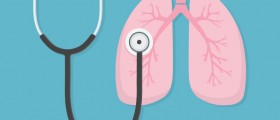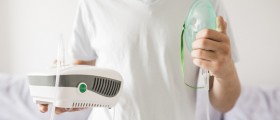
Spirometry Is A Pulmonary Function Test
Pulmonary function tests are used for evaluating lung capacity as well as diagnosing diseases and assessing treatment outcomes. One of the most commonly used tests is called a spirometry, which primarily examines the volume and flow of air in the lungs. Various conditions that can be diagnosed using spirometry include asthma, chronic obstruction pulmonary disorders, as well as cystic and pulmonary fibrosis. It is often the case that when testing for pulmonary functioning more than one test is used to get the optimal results. Bronchial challenge tests are often coupled with spirometries provided that individuals are not suffering from serious lung damage. Broncho dilators like methacholine or histamine are often administered to test the lungs in different conditions. Patients are sometimes assessed before and after physical activities.How Is Spirometry Done?
What To Expect During The Procedure?
The main purpose of spirometry testing involves assessing how much and how quickly the person can breathe out the air from the lungs. The elements that are being measured are various. For instance, spirometry is measuring the amount of air the patient can inhale through normal breathing and how much when asked to fill the lungs as much as possible. Spirometry also calculates how much air is left in the lungs once the person exhales completely. At the same time the test is concerned with the amount of air that is left in the lungs while the person breaths normally. The total lung capacity depends on the amount of air in the lungs when the person takes the deepest breath possible. Aside from taking long deep breaths, the patient will be asked to breath as quickly as possible for a period of one minute. Spirometry measures the amount of air the individual exhales in one strong breath. Also, when the person starts to exhale the airflow will be measured half way. The vital capacity is measured when the individual inhales as much air as possible and exhales for as long as there is air in the lungs. If individuals score low on the lung volume test it is highly probable that they are suffering from restrictive lung conditions.Limitations
The results are strongly biased by the patient’s effort and understanding of the procedure. The validity is established by repeating the exam at least three times, but the data are not as objective as they are from a blood test, for instance. If the individual does not take as deep a breath as possible the results will not be accurate. Similarly, if the exhale is not as strong or there is still air left in the lungs the person may be falsely diagnosed with a condition that is not present. Not surprisingly, children under 6 years of age cannot be tested using spirometry and neither can those who are not capable of understanding and following instructions. Also, the results of spirometry can be skewed if the air gets in or out of the respiratory tract through the nose. Similarly, if a broncho dilator is not properly inhaled the data are not valid. Many lung capacity tests are performed more than once to compare results and try to be as unbiased as possible. Individuals who suffer from heart problems or who have had heart attacks recently are advised to have lung function testing when their heart condition is stable. Further, many mild disorders cannot be diagnosed as the results appear normal. Spirometry is best employed as a monitoring device. Individuals who are already diagnosed with specific disorders can get regular exams to assess the treatment effects or progress. It is advised for those who are candidates for regular spirometries to remember their best results, while also keeping in mind the worst.



,-Asthma-And-Anxiety_f_280x120.jpg)












Your thoughts on this
Loading...